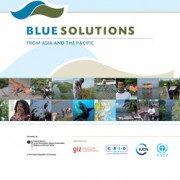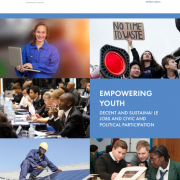Organic farming solutions
Agricultural carbon sequestration has the potential to substantially mitigate global warming impacts. According to Tim LaSalle, CEO Rodale Institute, organic agriculture, if practiced on the planet’s 3.5 billion tillable acres, could sequester nearly 40 percent of current CO2 emissions. “We call this approach regenerative organic agriculture to signify its focus on renewing resources through complementary biological systems which feed and improve the soil as well as avoiding harmful synthetic inputs.”
Regenerative organic farming, focused on enhancing long-term biological interactions, turns soil into a carbon reservoir, while conventional farming with large chemical imputs has the opposite effect of releasing carbon into the atmosphere. In addition, organic management also changes the structure of the soil, improving its ability to store water and deliver nutrients to plants over time as soil carbon levels continue to increase. Rodale research shows that no-till organic farming can reduce the energy input into farming by about 70 percent. Further, organic food offers health advantages and has become a lifestyle choice in many societies.
For these interconnected reasons, much more policy assistance for the organic sector is needed. Case studies (UNCTAD 2008, IFOAM 2008) have shown that the development of organic farming has, so far, been initiated mainly by NGOs or private companies. Still, governments should play an important role in providing a supportive framework for organic farming. Policy strategies should consist of a combination of market supply and demand measures. Since appropriate measures depend on the state of the organic agriculture market in the respective country, an in-depth integrated assessment of existing agriculture policies should be the first step.
Click here to read more about WFC Councillor Vandana Shiva’s projects to support organic farming in India.
Based on this initial assessment a selection of policies should be considered:
An area particularly worthy of state support is the recycling of urban bio-waste into organic fertilizers. This contributes to sanitation and environmental protection, and it provides carbon storing materials for farms. To trigger this process, governments could give financial incentives (e.g. low-interest loans) to recycling plant operators, or to erect recycling plants under state supervision.
Case Study: Costa Rica
One of the developing countries with the highest proportion of organic farming, 2.4 per cent certified, Costa Rica has a well-developed organic sector. As in most other countries, small farmers and NGOs were the first to get involved in organic agriculture. Local certification bodies and academics have also supported its development. In 2004, there were 3,500 farmers cultivating 10,800 hectares organically. Most certified organic production is for the export market, which is estimated to be worth US$ 10 million. Main export crops include coffee, banana, cocoa, orange juice, blackberries, pineapple, cane sugar, aloe and other medicinal plants. In the domestic market, there is now a supply of most products, certified and uncertified. The domestic sales are estimated to be US$ 1.5 million.
Lack of produce is a limiting factor for further market development. Various government programmes and institutions support most aspects of the sector, including domestic and export market development, food processing, credits and extension service. The National Organic Agriculture Programme was established in 1999 and, together with the sector, the agency developed a national strategy for organic production based on participatory consultations. Since 2001, there has been a mandatory organic regulation in place and Costa Rica is the only developing country, other than Argentina and India, which has acquired recognition for exports of organic products to the European Union. There is also a governmental seal available for all certified producers; however, it is not yet widely recognized. There are two domestic certification organizations and four foreign ones active in Costa Rica, with the domestic ones having the most clients. The sector is organized through one organization and collaboration between the sector and the Government is very well developed.







